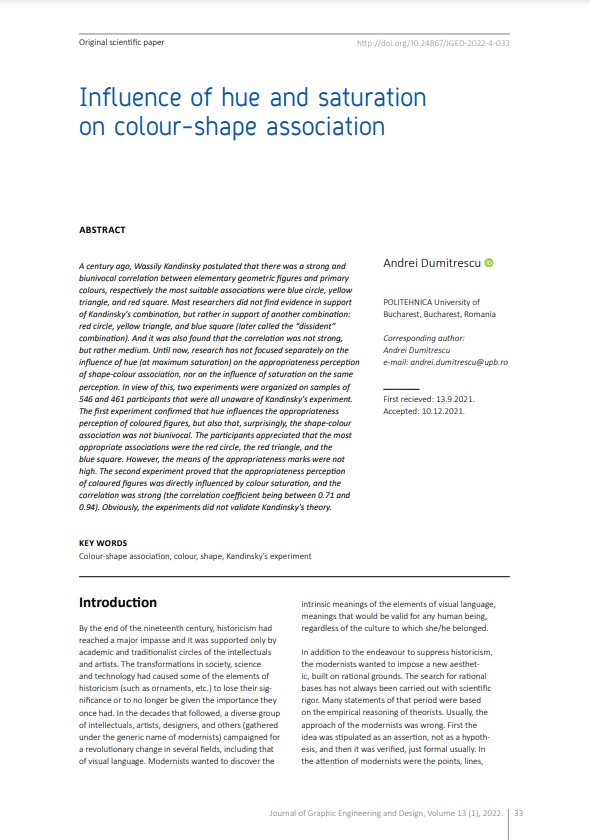
Published 2022-03-01
abstract views: 62 // Full text article (PDF): 95
Keywords
- Colour-shape association,
- colour,
- shape,
- Kandinsky’s experiment
How to Cite
Copyright (c) 2022 © 2022 Authors. Published by the University of Novi Sad, Faculty of Technical Sciences, Department of Graphic Engineering and Design. This article is an open access article distributed under the terms and conditions of the Creative Commons Attribution license 3.0 Serbia.

This work is licensed under a Creative Commons Attribution 3.0 Unported License.
Abstract
A century ago, Wassily Kandinsky postulated that there was a strong and biunivocal correlation between elementary geometric figures and primary colours, respectively the most suitable associations were blue circle, yellow triangle, and red square. Most researchers did not find evidence in support of Kandinsky's combination, but rather in support of another combination: red circle, yellow triangle, and blue square (later called the “dissident” combination). And it was also found that the correlation was not strong, but rather medium. Until now, research has not focused separately on the influence of hue (at maximum saturation) on the appropriateness perception of shape-colour association, nor on the influence of saturation on the same perception. In view of this, two experiments were organized on samples of 546 and 461 participants that were all unaware of Kandinsky's experiment. The first experiment confirmed that hue influences the appropriateness perception of coloured figures, but also that, surprisingly, the shape-colour association was not biunivocal. The participants appreciated that the most appropriate associations were the red circle, the red triangle, and the blue square. However, the means of the appropriateness marks were not high. The second experiment proved that the appropriateness perception of coloured figures was directly influenced by colour saturation, and the correlation was strong (the correlation coefficient being between 0.71 and 0.94). Obviously, the experiments did not validate Kandinsky's theory.
Article history: Received (September 13, 2021); Revised (November 11, 2021); Accepted (December 10, 2021); Published online (March 1, 2022)

